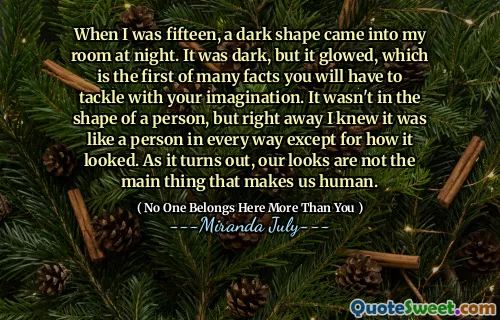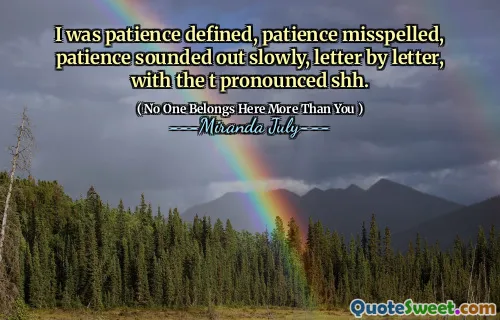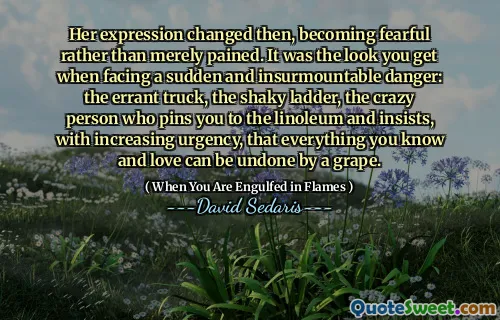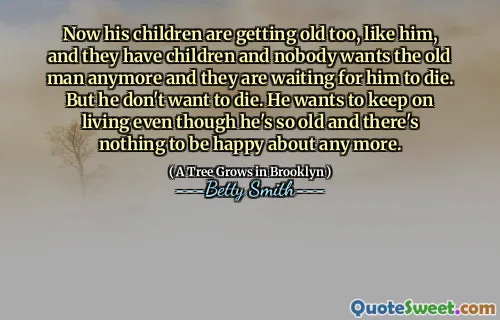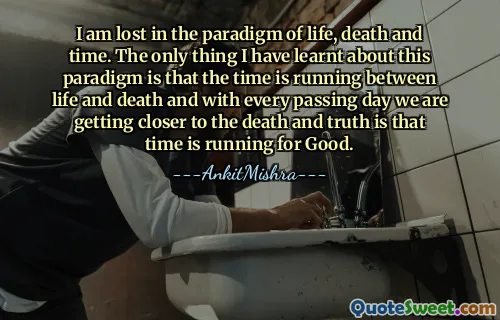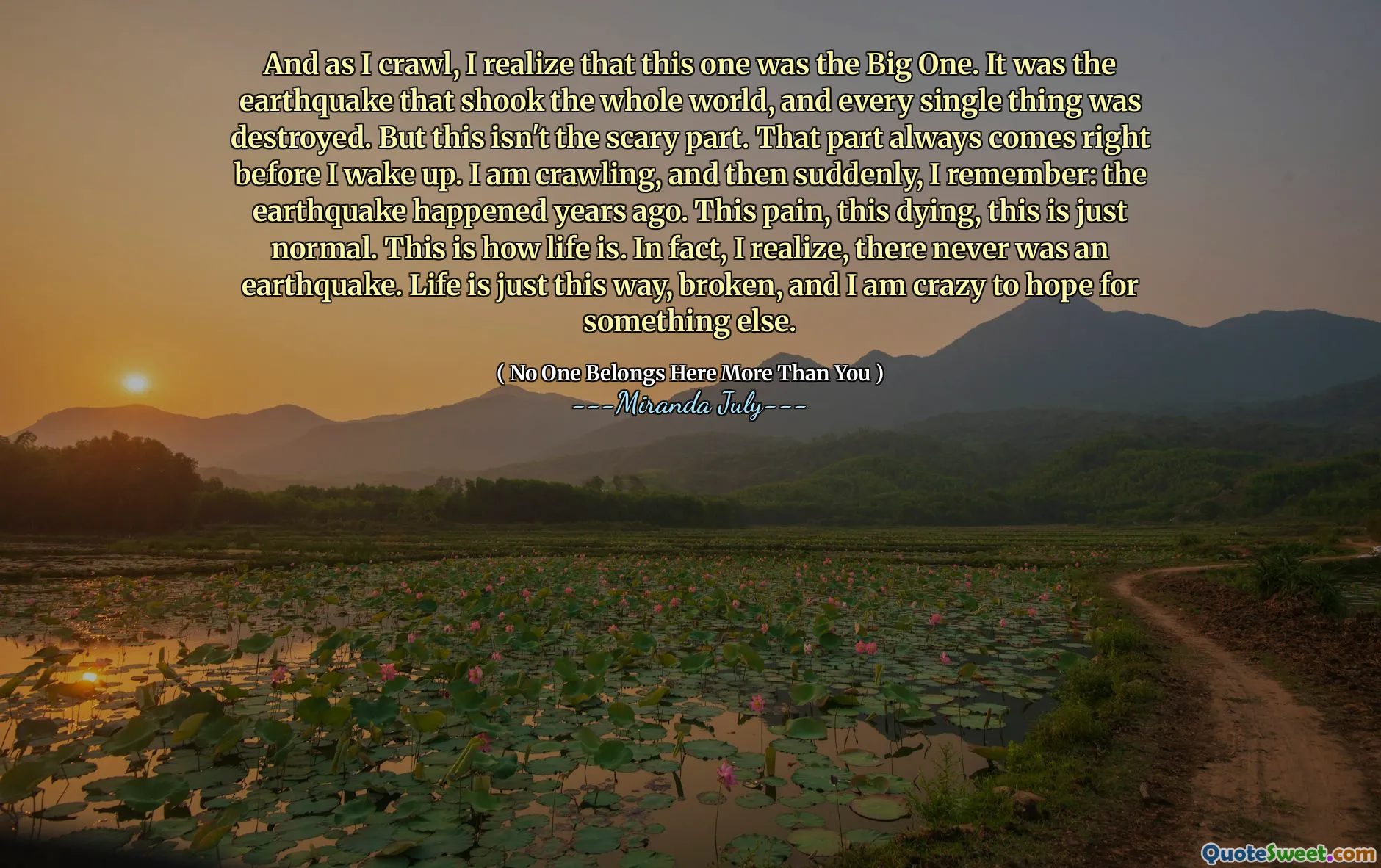
And as I crawl, I realize that this one was the Big One. It was the earthquake that shook the whole world, and every single thing was destroyed. But this isn't the scary part. That part always comes right before I wake up. I am crawling, and then suddenly, I remember: the earthquake happened years ago. This pain, this dying, this is just normal. This is how life is. In fact, I realize, there never was an earthquake. Life is just this way, broken, and I am crazy to hope for something else.
*This quote poignantly explores the often-blurred line between perceived trauma and internal numbness. The imagery of an earthquake—something catastrophic that shakes the entire world—serves as a metaphor for profound upheaval or loss. Yet, the narrator reveals that what seemed like a monumental event was perhaps just a trigger of a long-standing internal disorder or a recurring mental state. The recurring theme of nightmares or vivid dreams right before awakening emphasizes the elusive nature of reality and memory—how often what we fear or perceive as crises are merely remnants of unresolved issues or echoes of past pain. The realization that the earthquake never actually occurred challenges the reader to consider how trauma can become an ingrained part of our perception—so much so that it feels as real as fact itself. The acceptance that life is inherently fractured, and that hope may be futile, reflects a somber acknowledgment of despair and resignation. It prompts us to reflect on the ways we normalize suffering, how pain becomes our normal state, and how hope can seem naive or misplaced when faced with ongoing internal turmoil. There is a deep sense of existential questioning: is this suffering truly external, or do we internalize and perpetuate it? Ultimately, this quote pushes us to confront our own understanding of trauma, resilience, and the possibility—or impossibility—of true repair or change in our lives.

